Pokémon Go: How to catch rare Pokémon
What's the difference between Poké Ball, Great Ball, and Ultra Ball?
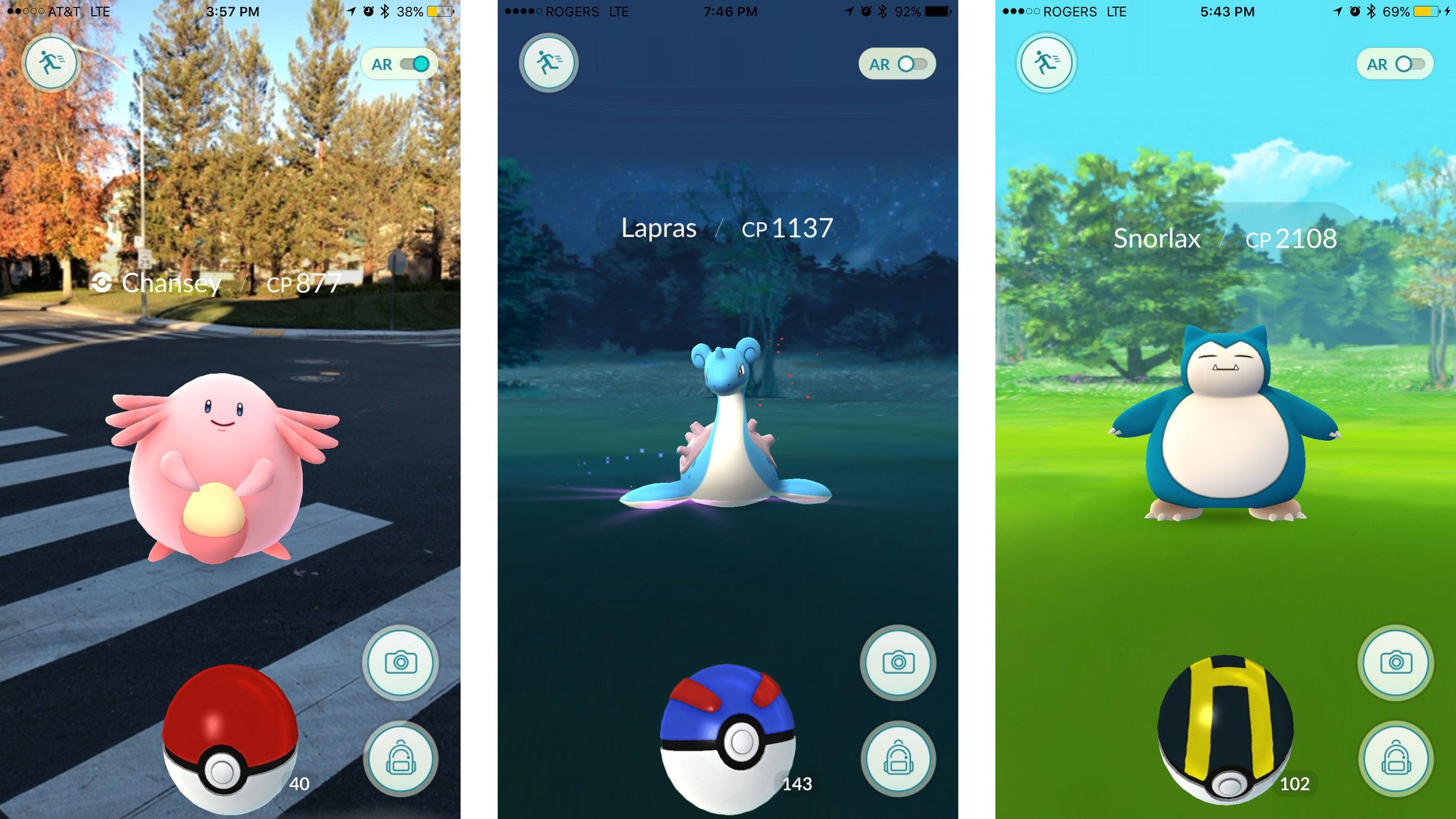
Everyone starts off with Poké Balls, which are the standard way to catch Pokémon. They're useful but they offer no additional bonuses to successfully complete the catch. As you increase in level, you get access to more powerful items:
- Level 1: Poké Ball (red and white.)
- Level 12: Great Ball (blue and purple.)
- Level 20: Ultra Ball (yellow and black.)
Great and Ultra Balls modify the catch rate, making it harder for Pokémon to escape. (They don't effect flee rate, so if a Pokémon does escape, it still has the same chance to flee.)
- Poké Ball: 1x
- Great Ball: 1.5x
- Ultra Ball: 2x
What about Curve Balls?
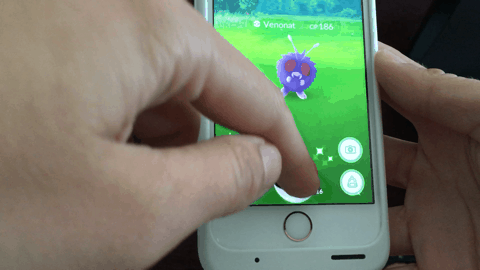
Throwing a Curve Ball also boosts your catch rate and this stacks with the boosts from different type of Poké Balls:
- Curve Poké Ball: 1.7x
- Curve Great Ball: 2.55x
- Curve Ultra Ball: 3.4x
Since a curve Poké Ball has a 1.7x modifier and a regular Great Ball only has a 1.5x modifier, yeah. ABC. Always be curving!
Razz Berry — what's the modifier on the Razz Berry?
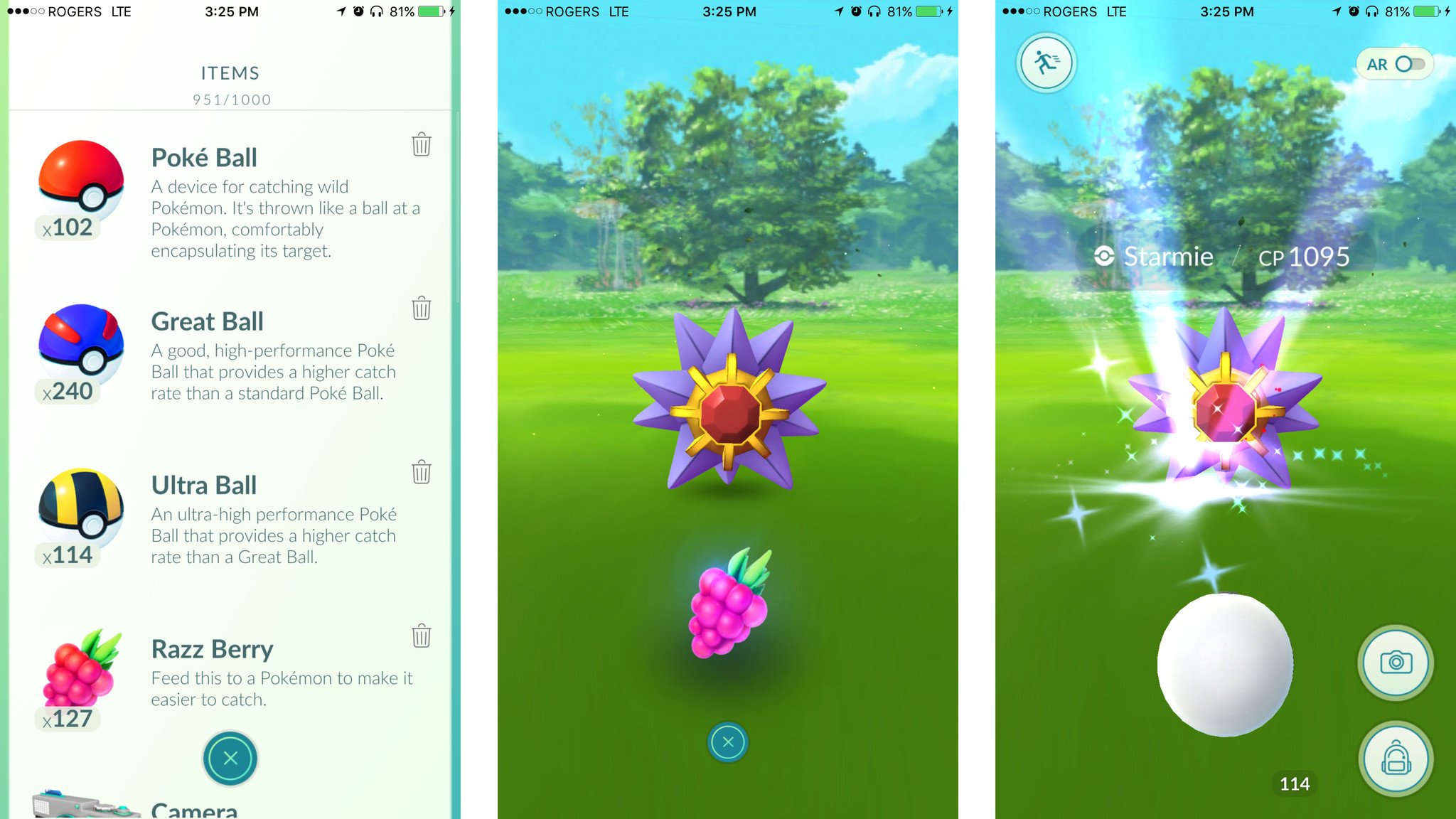
The Razz Berry bonus is 1.5x, same as Great Ball and slightly less than Curve Ball, but since bonuses stack, it can make all those things even better.
- Poké Ball + Razz Berry: 1.5x
- Great Ball + Razz Berry: 2.25x
- Ultra Ball + Razz Berry: 3x
- Curve Poké Ball + Razz Berry: 2.55x
- Curve Great Ball + Razz Berry: 3.825x
- Curve Ultra Ball + Razz Berry: 5.1x
And the modifier for a fancy Golden Razz Berry?
For extra rare Pokémon, you might want to use a Golden Razz Berry. Golden Razz Berries don't drop from PokéStops, but rather are rewards for Raids, Research, and Events. The bonus for a Golden Razz is x1.5, the same as Great Ball and slightly less than Curve Ball, but since bonuses stack, it can make all those things even better.
- Poké Ball + Golden Razz Berry: 2.5x
- Great Ball + Golden Razz Berry: 3.75x
- Ultra Ball + Golden Razz Berry: 5x
- Curve Poké Ball + Golden Razz Berry: 4.25x
- Curve Great Ball + Golden Razz Berry: 5.625x
- Curve Ultra Ball + Golden Razz Berry: 8.5x
Nanab Berry — what is it and what does it do?
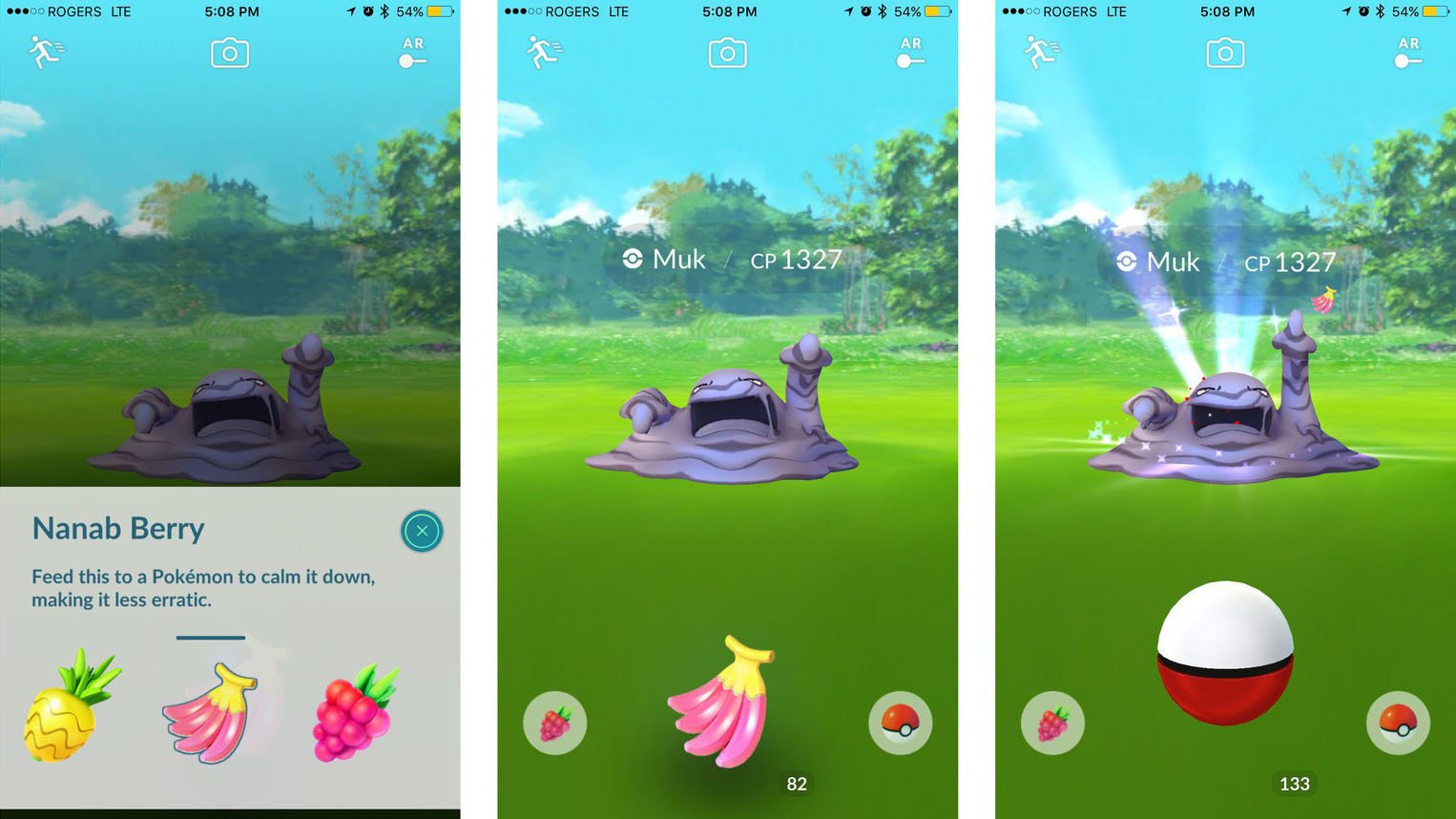
Nanab Berries look like pink bananas. You can use one the same way you use a Razz Berry and, while they also make a Pokémon easier to catch, they do it in a different way.
Master your iPhone in minutes
iMore offers spot-on advice and guidance from our team of experts, with decades of Apple device experience to lean on. Learn more with iMore!
A Razz Berry increases your catch rate, so if you hit Pokémon with a Poké Ball it's less likely to escape. A Nanab Berry slows down the Pokémon, making it easier to hit with a Poké Ball to begin with.
That said, most Pokémon don't move all that fast, and a Nanab Berry doesn't stop all movement, just the more erratic movement. And you can only use one Berry at a time. Still, these can be useful when trying to catch Pokémon who keep hitting your Poké Balls back at you.
What's a Pinap Berry and does it help catch as well?
Pinap Berry look like pineapples and there are two different kinds: normal Pinap Berries and Silver Pinap Berries. Normal Pinap Berries don't affect catch rate, or help you get a Pokémon in any way. Instead, if you use a Pinap Berry and then immediately catch a Pokémon — and it doesn't escape or flee! — you get double candy for that Pokémon.
That makes it great to use on any high-value Pokémon you want to evolve or power up, like Dratini or Larvitar. It basically makes it like catching two Pokémon at once.
Silver Pinap Berries, though, give you twice the candy and a 1.8x to your catch rate. And, you guessed it, that stacks with your other bonuses as well! That having been said, Silver Pinap Berries are even rarer than Golden Razz Berries, so save these for especially rare Pokémon.
How do Throw Bonuses factor in?
Those colored target rings that appear on Pokémon and then slowly shrink in size reward accuracy. Hit inside that circle and you'll get a bonus. The circles shrink smoothly but there are three distinct levels for bonuses.
- Large target: Nice!
- Medium target: Great!
- Tiny target: Excellent
When you nail one, you'll get a Nice! Great! or Excellent! acknowledgment on screen. Just like the targets shrink smoothly, so do the bonuses increase smoothly. The smaller the target you hit, the higher the bonus you get.
The range is between 1x for barely making the target at all to 2x for nailing it dead center. Here's how the on-screen acknowledgments seem to break it down.
- Nice: 1x to 1.3x
- Great: 1.3x to 1.7x
- Excellent: 1.7x to 2x.
So, you should always aim for Excellent?
Yes and no. If you're Bullseye, Hawkeye, the Green Arrow, or otherwise have perfect aim and timing and can nail Excellent every time, sure. Go for it. Enjoy the bonus. If you miss a little or a lot, though, you get no bonus.
When you factor in Pokémon jumping and attacking, which disrupts the target, with Curve Balls, which you want to throw, and the different distances required for different Pokémon, it can be a lot to process. Start slow and low and work your way up.
In other words, you're better off aiming for Great if you can hit it consistently than Excellent if you can't, and Nice is better than Great if you miss that more than you hit.
How do Medal Bonuses work?
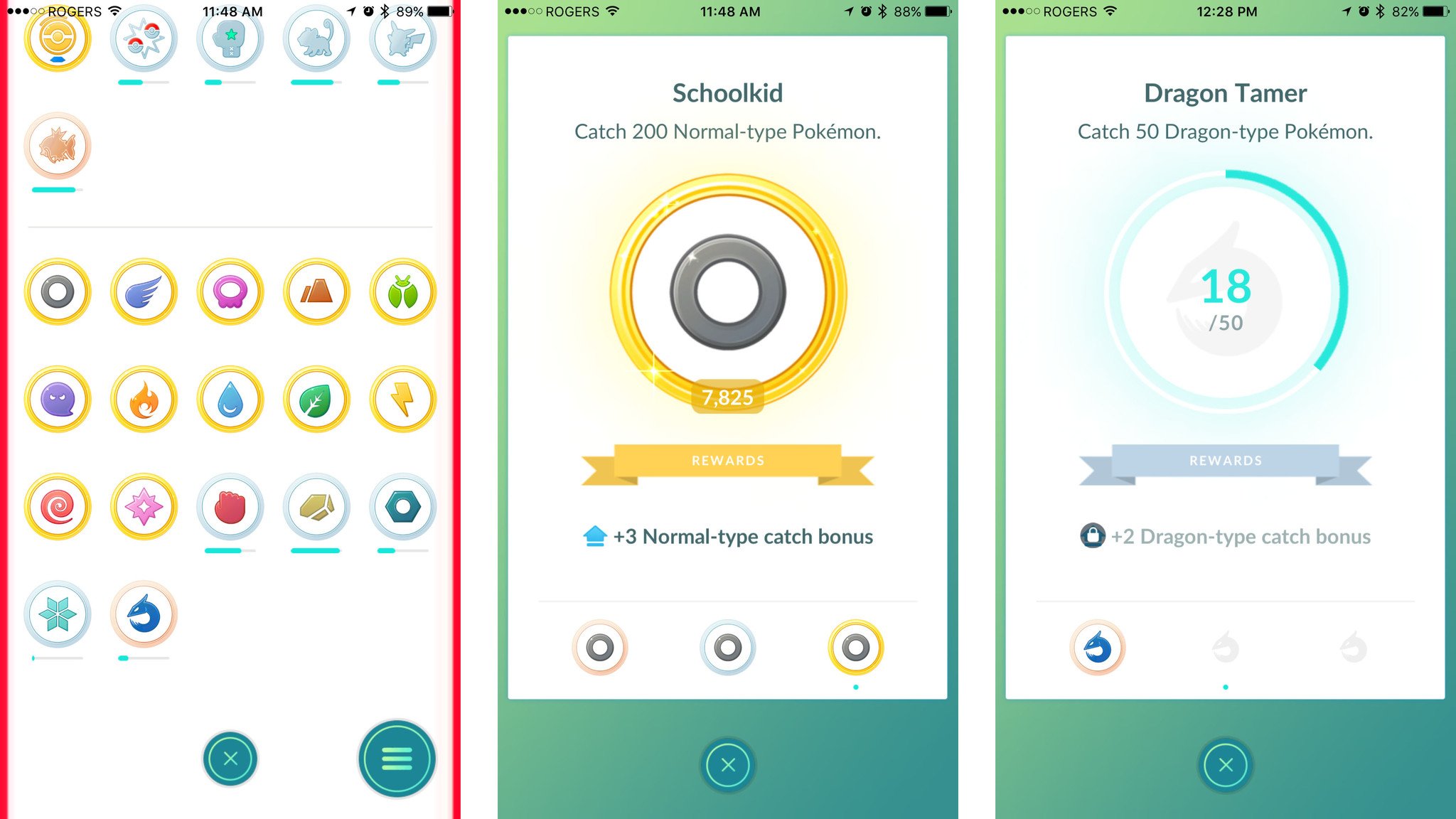
Medals are awards you can earn in Pokémon Go for completing certain objectives. While there are lots of Medals you can earn in Pokémon Go, only some of them give bonuses. The Type Medals are the ones which give bonuses to your catch rate:
- Bug: Bug Catcher Medal
- Dragon: Dragon Tamer
- Electric: Rocker
- Fairy: Fairy Tale Girl
- Fight: Black Belt
- Fire: Kindler
- Flying: Bird Keepr
- Ghost: Hex Maniac
- Grass: Gardener
- Ground: Ruin Maniac
- Ice: Skier
- Normal: Schoolkid
- Poison: Punk Girl
- Psychic: Psychic
- Rock: Hiker
- Water: Swimmer
- Delinquent: Dark
You get type medals for catching Pokémon of a specific type:
- Bronze: 10 Pokémon of the same type.
- Silver: 50 Pokémon of the same type.
- Gold: 200 Pokémon of the same type.
Each medal level gives you a bonus:
- Bronze: 1.1x
- Silver: 1.2x
- Gold: 1.3x
Some Pokémon have two types, for example water and flying. In those cases, if you're at different medal levels for each type, you have to average the bonus.
- None / None: 1x
- None / Bronze: 1.05x
- None / Silver: 1.1x
- None / Gold: 1.15x
- Bronze / Bronze: 1.1x
- Bronze / Silver: 1.15x
- Bronze / Gold: 1.2x
- Silver / Silver: 1.2x
- Silver / Gold: 1.25x
- Gold / Gold: 1.3x
Does the color of the target ring reflect the real-time catch rate?
It does, but given how hard it is to "read" slight variances in color spectrum, it's better to think of it as a rough guide. It's easy to see the difference between a Poké Ball and an Ultra Ball, and with or without Razz Berry as well. Medal bonuses are tougher to discern.
The target color can be anywhere on the spectrum from red (hard catch) to green (easy catch) with yellow in between. So, to artificially freeze-frame the catch rates:
- Reddish: "0"-20%
- Orangish: 20-40%
- Yellowish: 40-60%
- Limeish: 60-80%
- Greenish: 80-100%
Can you really catch any Pokémon?
If you stack your bonuses right, you have a high probability — and in some cases a mathematical certainty — of catching any Pokémon with a high enough catch rate and low enough level. As their catch rates go down and levels go up, and your bonuses go up, you're still playing the odds.
Catching a level 1 Magikarp you can take to the bank. Catching a level 35 Dragonite — be prepared for a fight.
Any other catch questions?
Do you have questions on catching Pokémon in Pokémon Go? Got tips for your fellow Trainers? Drop them in the comments below, and be sure to check out our Complete Pokédex, as well as our many Pokémon Go Guides so you too can become a Pokémon Master!

Rene Ritchie is one of the most respected Apple analysts in the business, reaching a combined audience of over 40 million readers a month. His YouTube channel, Vector, has over 90 thousand subscribers and 14 million views and his podcasts, including Debug, have been downloaded over 20 million times. He also regularly co-hosts MacBreak Weekly for the TWiT network and co-hosted CES Live! and Talk Mobile. Based in Montreal, Rene is a former director of product marketing, web developer, and graphic designer. He's authored several books and appeared on numerous television and radio segments to discuss Apple and the technology industry. When not working, he likes to cook, grapple, and spend time with his friends and family.

